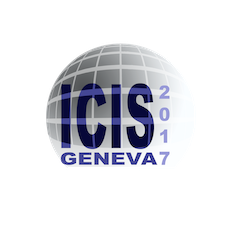Speaker
Description
Rare Elements in-Gas Laser Ion Source and Spectroscopy at S3 (REGLIS3) is the new set-up currently under construction at the SPIRAL2/GANIL facility for the production of high-intensity radioactive ion beams, preselected by the Super Separator Spectrometer (S3). REGLIS3 will be a source for the production of low-energy, high-purity isotopic and isomeric ion beams and at the same time a tool for high-precision laser spectroscopy and mass spectrometric measurements [1], amongst others. It is based on the ‘In-Gas Laser Ionization and Spectroscopy’ (IGLIS) technique, which has been pioneered at KU Leuven in Belgium. In the most recent variant of this technique, a radioactive ion beam is thermalized and neutralized in a gas cell. A continuous flow of gas leads the atoms to the exit of the gas cell, where a de Laval nozzle produces a quasi-parallel supersonic gas jet in which the resonant laser ionization takes place. The selectively-ionized atoms of interest are then efficiently transported and bunched by a system of segmented Radio-Frequency Quadrupole (RFQ) ion guides, accelerated and mass separated. The low temperature, small velocity spread and low pressure in the jet, enable the different spectroscopic broadening mechanisms to be significantly reduced in comparison to in-gas-cell laser ionization spectroscopy, where the ionization region was placed within the gas cell, rather than in the gas jet [2]. The first on-line demonstration of this new technique has been recently performed at the LISOL facility, Louvain La Neuve, Belgium, with 214-215Ac isotopes [3]. A strong improvement in spectral resolution was obtained compared to the standard in-gas cell technique. A gain in efficiency and selectivity of about a factor ~20 was also achieved. With these new results, the selective production of isomer ions can be investigated. These results and the status of the REGLIS3 setup will be presented at the conference.
References
[1] R. Ferrer et. al., Nuclear Instruments and Methods B317 (2013) 570-581.
[2] Y. Kudryavtsev et. al., Nuclear Instruments and Methods B297 (2013) 7-22.
[3] R. Ferrer et. al., Nat. Commun. 8, 14520 doi:10.1038/ncomms14520 (2017).
